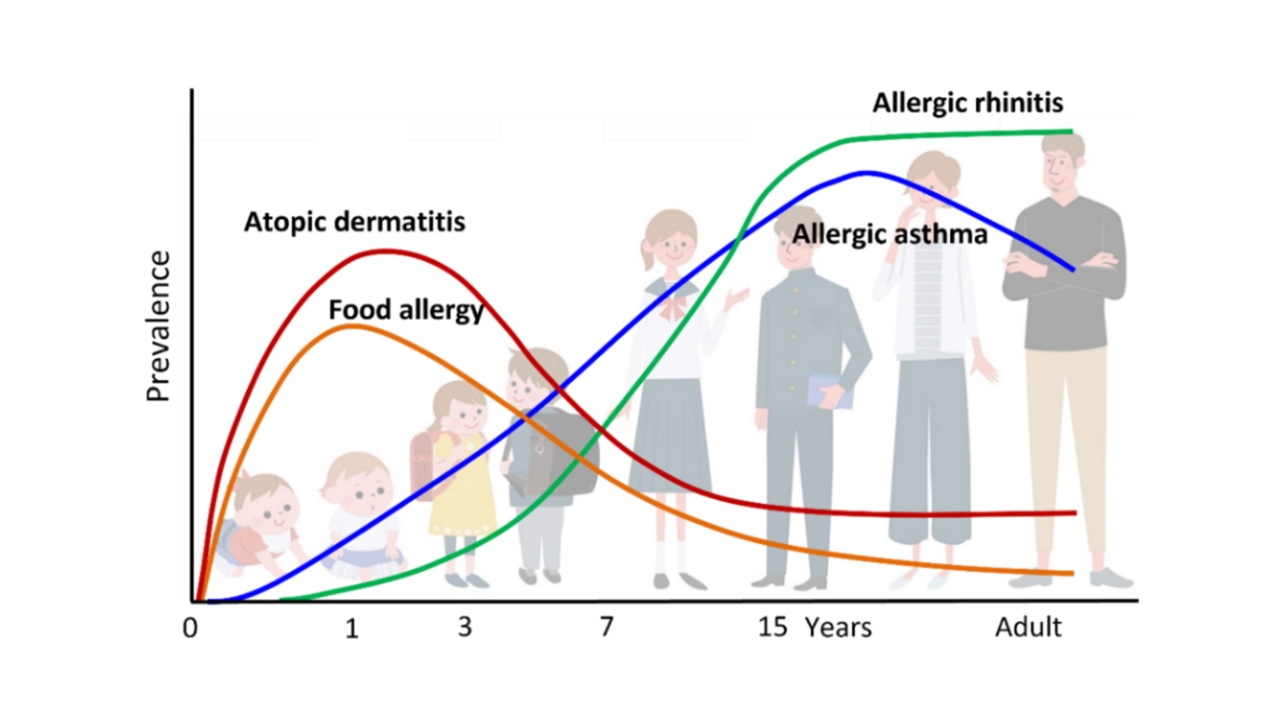The term "allergic march" might sound like something seasonal, but it actually refers to the way allergies often develop and change as children grow. Also known as the atopic march, it describes the typical progression of allergic conditions that start in infancy and can evolve into different types of allergic diseases over time. Understanding the allergic march can help parents recognize early signs and work with doctors to manage symptoms before they become more serious.
It usually begins in infants with eczema (also called atopic dermatitis). Eczema is a chronic skin condition that causes dry, itchy, and inflamed skin. While eczema isn’t always caused by allergies, children who have it are more likely to develop other allergic conditions later in life. This is especially true if the eczema appears early and is severe. Many of these children may also develop food allergies, often to common foods like milk, eggs, peanuts, or soy.
As the child grows, the allergic march may continue with the development of allergic rhinitis, also known as hay fever. This typically starts in the preschool or early school years and includes symptoms like sneezing, nasal congestion, runny nose, and itchy eyes especially during certain seasons or after exposure to things like dust mites, pollen, or pet dander. Some children may also begin to experience asthma, which causes wheezing, coughing, shortness of breath, and chest tightness. Asthma is often triggered by allergens or respiratory infections.
What’s important to note is that not every child with eczema will go on to develop food allergies, asthma, or allergic rhinitis — but those with a family history of allergies are more likely to follow this pattern. The allergic march highlights how connected these conditions are and how the immune system, when overly reactive, can shift from one allergic disease to another.
Early diagnosis and management of each stage of the allergic march can make a real difference. For example, keeping eczema under control with proper skin care might reduce the chance of developing food allergies. Similarly, identifying and managing environmental allergies early can help reduce the frequency or severity of asthma attacks. Doctors might recommend allergy testing, lifestyle changes, or medications like antihistamines, nasal sprays, or inhalers depending on the symptoms and age of the child.
There is ongoing research into whether early interventions like introducing allergenic foods at the right time or using certain skin treatments in infants with eczema might slow down or prevent the allergic march altogether. While we don’t yet have all the answers, awareness is key.
If you're a parent noticing your child developing eczema or other allergy symptoms, don’t wait to bring it up with your pediatrician. Understanding the allergic march empowers you to take proactive steps and get the right care at the right time. With early support, many children outgrow or manage their allergies well and lead healthy, active lives.



Add a Comment